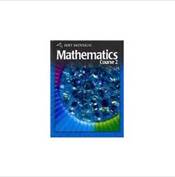
For Nelson, as for Wittgenstein, the proposition is a discrete vehicle for thought experiments whose outcomes are proposed by the author, and then challenged in a way that suggests why the author’s or reader’s proposed outcomes may have been originally misguided. Nelson’s intense thematic engagement altered the very embryo of her project, which, in its final state, leans heavily on the structure of Wittgenstein’s Philosophical Remarks. Additionally, Nelson’s awareness of form and elements of closure helped synthesize her various subjects.

Just as one of Benjamin’s general attempts was to suggest the profound connections between mysticism, materialism, and idealism, Nelson is attempting to connect diverse subject matter, while also creating a form which is not only conducive to her exploration, but generatively compatible as well. Thus, the only way Bluets can accurately be labeled “essay” (as the back cover suggests), it is only in the context of that word’s formal definition, which is to make an attempt. The result not only defies easy categorization, but also leans toward Walter Benjamin’s famous declaration that all great works of literature either dissolve a genre or invent one.


“But because I am who I am,” Nelson says, “or because pleasure is what it is, the book quickly slid into dealing with pain too.” Consequently, Bluets reaches far beyond the constraints of its subject, resulting in a series of delicately associative numbered paragraphs investigating a broken romantic relationship, a friend’s chronic nerve pain, the writing process itself, and the deceptive elements of perception and color.

In an interview with Bomblog, Maggie Nelson says she began writing Bluets because she wanted to spend time thinking and writing about something she loved - in this case, the color blue - rather than something she found despicable and frightening.


 0 kommentar(er)
0 kommentar(er)
